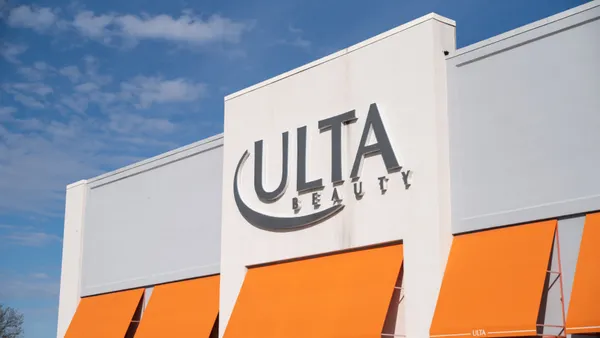UPDATE: February 25, 2019: The hearing related to Marble Ridge's litigation with Neiman Marcus, slated for Feb. 21 was canceled that day, according to a court document. No additional details were provided.
Dive Brief:
-
Neiman Marcus and its debtholders are resetting talks about reworking its debt before its term loan comes due next year, sources familiar with the matter recently told Bloomberg.
-
Some creditors have agreed to restrict trading during confidential negotiations, the sources said, adding that Neiman Marcus is reaching out to creditors and its advisors to work through issues that have held back debt restructuring efforts in the past.
-
Neiman Marcus declined to comment to Retail Dive, but told Bloomberg in a statement that it views the negotiations as an ongoing process. "Periodic pauses are a natural part of the process and are absolutely expected to occur on a regular basis. We believe a mutually beneficial solution can be reached and intend to continue to seek a result that will benefit the company and its various stakeholders," the company said. Marble Ridge, a small but vocal creditor, also declined to comment to Retail Dive on whether it will participate in the talks.
Dive Insight:
Talks have been up and down for months.
The refinancing discussions — referred to internally at Neiman Marcus by codename "Project Rolex" in the company's SEC docs — focus on an "ignite to win" plan to drive total sales to $700 million in adjusted EBITDA within five years. Loosely, the company's strategy hinges on its ability to deepen customer relationships in key metro areas, build "seamless experiences" with the help of digital personalization tools and connect emotionally with luxury shoppers through its assortment and service. But bondholders and lenders aren't convinced, and that comes down to one main issue: MyTheresa.
The Neiman Marcus-owned e-commerce unit purchased in 2014 was transferred this summer to Neiman Marcus Group, Inc, the company's parent entity. That group is owned by two private equity firms, Ares and Canada Pension Plan Investment Board. MyTheresa is seen as one of the company's most valuable assets and December financing proposals from both bondholders and lenders name the business as key to protecting their debt claims.
"The gist of the issue between the creditors and the company is the treatment of MyTheresa, so until there is some resolution on that issue you're still going to have this contention between creditors and the company," Philip Emma, a senior analyst at Debtwire, told Retail Dive in an interview Thursday. "You can negotiate around some of the terms and some of the coupon and things like that, but that was a fundamental difference between the proposals, was how MyTheresa was traded."
At least one vocal debtholder has gone so far as to line up litigation on the matter. Late last year, Marble Ridge filed a lawsuit against the department store retailer, which in turn countersued. Marble Ridge has argued that the "asset transfer was an attempt to move the business beyond the reach of existing creditors" that violated terms, while Neiman Marcus insists it was permitted.
A hearing is scheduled today, in which Marble Ridge is anticipated to push forward while Neiman Marcus will likely argue the claims should be dismissed. Marble Ridge has also raised increasingly urgent doubt over the department store retailer's ability to pay off its debt while building the future it envisions in the retail landscape.
But in December, CEO Geoffroy van Raemdonck (who has been in the role for just a year) said the company has "ample runway to address our debt" and that he's certain a "multi-beneficial solution can be reached."
"Part of the reason this can sort of drag out as long as it has is because it's not like the company is facing an imminent maturity. It's not like it's facing an imminent covenant violation," Emma said. Neiman Marcus does not face a debt maturity until Oct. 25, 2020, which gives the company and creditors time to negotiate, Emma said. However, there is a soft deadline of sorts, in that the debt will begin to show up as a liability starting with the quarter ending in late October this year.
"That doesn't change when the debt is due but, the term loan showing as a current liability can create a concern for vendors and factors who will need to make credit extension decisions that extend into 2020," he clarified in an email.













